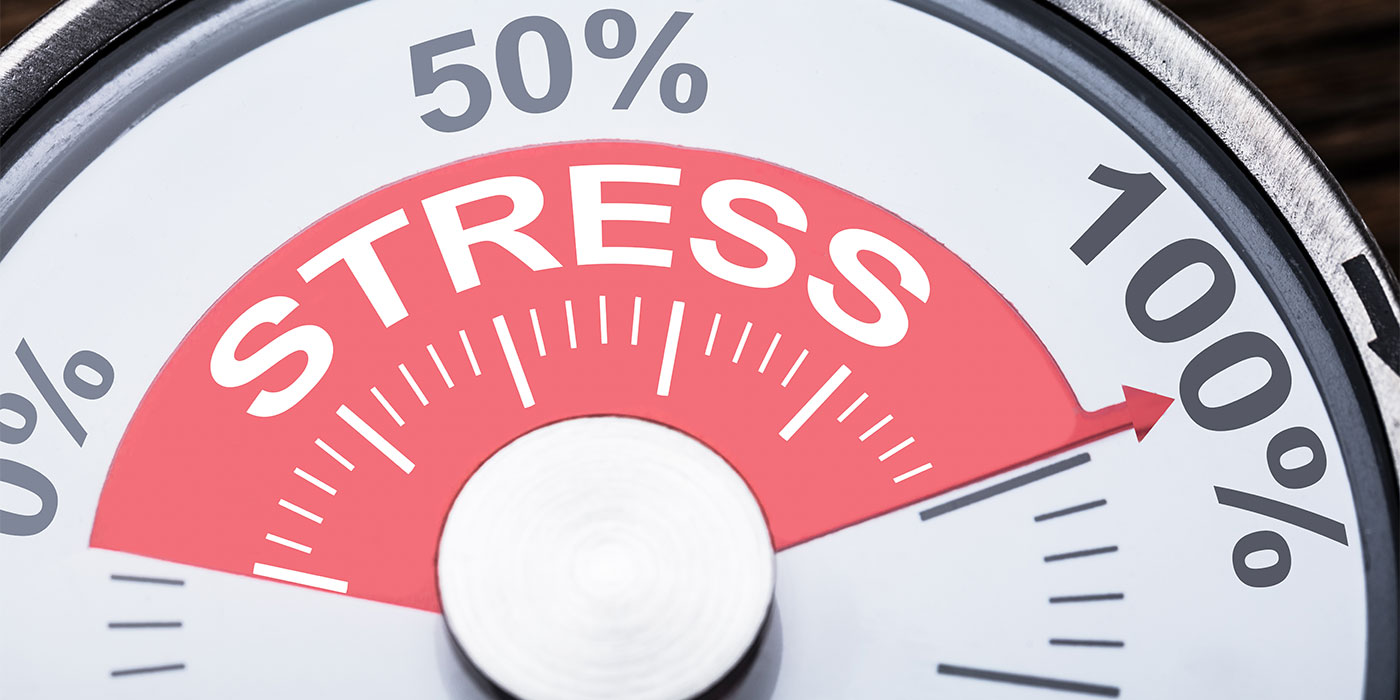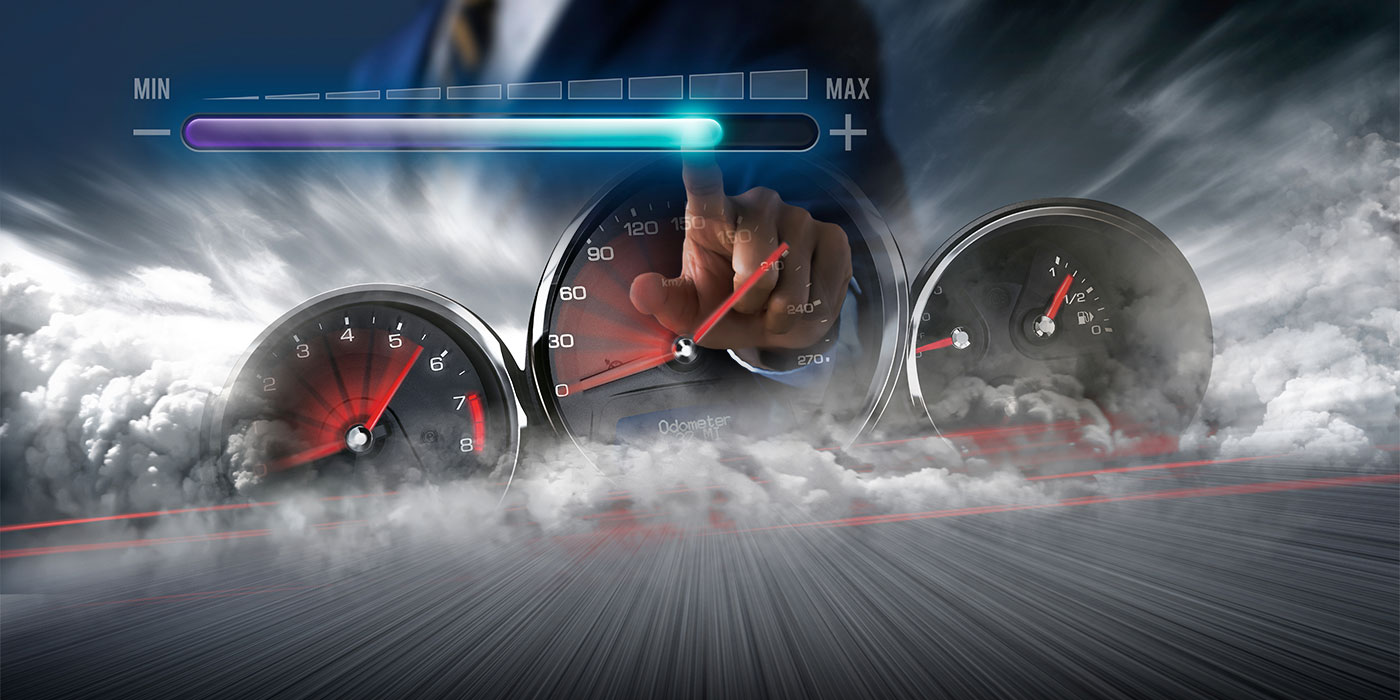
 Today’s collision repairer needs to be a savvy businessman as well as a master craftsman. And part of being a savvy businessman and running a profitable, efficient and ethical repair facility involves knowing one’s legal rights and obligations that not only affect him or her but the entire industry.
Today’s collision repairer needs to be a savvy businessman as well as a master craftsman. And part of being a savvy businessman and running a profitable, efficient and ethical repair facility involves knowing one’s legal rights and obligations that not only affect him or her but the entire industry.
Repairers can address these legal issues by understanding the rights and duties owed to customers as well as the lack of duties owed to anyone outside of the repair contract. Also, certain necessary business documents can help repairers comply with their states’ laws and outline the expectations of the parties involved in the repair.
Rights and Obligations
It’s clear that many repairers don’t understand their rights relating to customers, partly because they’re confused as to whom the financially responsible party is and why. An area that causes significant confusion for the repair industry is distinguishing between the status of customers when an insurance company is involved in “paying” for the repairs.
First, let’s understand that, unless you’re involved in an insurance company direct-repair program (DRP), the insurance company never technically “pays for the repairs.” Instead, the consumer is obligated to pay the repairer for the work performed on the vehicle, and the insurer is obliged to indemnify the consumer or pay for damages caused by its insured. This concept has become blurred by insurers’ injecting themselves directly into the repair process and has resulted in consumers and repairers becoming confused about their rights and obligations to each other. Accordingly, it’s easier to understand these rights and obligations if they’re broken down to
their elements.
There are two types of insurance company claimants entitled to payment: first parties and third parties. These two types of claimants have entirely different legal rights in relation to the insurance company, and it’s important for repairers to truly understand what they’re obliged to give to a customer, irrespective of the wishes or dictates of an insurance company.
First party: A first party is a person or entity recovering directly against his or her own insurance policy. This is typically the at-fault driver, but need not be. Fault isn’t the operative issue for determining the party’s status; the person’s relationship to the insurance policy being claimed against is. A first party’s rights and obligations relating to the insurance company and insurance policy are governed by contract law.
Third party: A third party is a person or entity seeking to recover against another (the at-fault driver) for the damages caused to his or her vehicle. A third party doesn’t have any direct contractual rights against the insurance policy that will ultimately be subject to paying the claim. A third party’s rights to recover against the at-fault driver arise from tort law.
Creation of Status Confusion
Because a third party has no direct rights against the insurance policy of the first party (at-fault driver), to be entitled to recover for the damages caused to the vehicle, he or she would be required to sue the first party for negligence and claim monetary damages. Once the third party obtained a judgment against the at-fault driver, only then does he or she have the right to legally demand and obtain payment of the judgment from the at-fault driver’s insurance company.
Given this situation, you might ask yourself, “Why would an insurance company ever become involved with and pay out on a third-party claim without a lawsuit?” There are a few reasons why insurers become involved in the payment of third party claims prior to any litigation. First, it’s simply less expensive for an insurer, which agrees that its insured is liable for the damage, to pay the claim – as the insurer knows it will be responsible for paying the claim at a later point in time, with interest, as well as paying for the costs associated with defending its insured. Other reasons associated with the cost issue including speedy settlement, certainty, non-involvement of legal counsel, etc., which make it tactically beneficial to settle third party claims without litigation. Additionally, some states’ regulations can be interpreted as requiring insurers to make a good faith attempt to settle third party claims without litigation.
The other reason insurers resolve third-party claims without litigation is that they may be subject to bad faith lawsuits by their insureds for causing them to become involved with indefensible litigation. As a result, insurers have incentives for resolving third-party claims without requiring the third party to first jump through the hoops of suing the insured and obtaining a judgment.
Insurers’ willingness to resolve first- and third-party complaints, however, doesn’t alter what the customer is entitled to for the vehicle repair in the contract between the customer and the repairer. Therefore, it’s important for repairers to understand who their customer is, what the federal and state laws require them to provide to the customer, and the potential danger involved with allowing someone other than the customer to interfere with the vehicle repair.
Consumer is the Customer
In today’s marketplace, the agree- ment to repair a vehicle is always entered into between the consumer and the repair shop. This is true even for consumers using a DRP network and remains true for consumers’ vehicle repairs that are “arranged for” by an insurer – as the authorizing document signed by the consumer to enable the insurer to make these arrangements on behalf of him or her states that the insurer is “assisting” the consumer and, therefore, the insurer is acting as an agent of the consumer. While this might sound like an unnecessary distinction, it’s important for consumers as it relates to insurers’ elections of remedies under the insurance policy for a first-party claim, the insurers’ shared liability for the vehicle repair and the obligations insurers may have incurred to act in the best interests of the consumer. As a result, no matter how the arrangement to repair a consumer’s vehicle occurs in today’s practice, the contract for repair is always between the consumer and the repairer.
There’s a possible situation in which the repair contract could be entered into between the insurer and the collision shop for the repair of a consumer’s vehicle, but this currently never occurs in practice. It can only occur with a first-party claim and has no application to any third-party repair. The insurer-repairer contract for repairing a first-party claimant’s vehicle would take place only if an insurer: 1) initially informed the first-party insured of the insurer’s election to repair the vehicle under the terms of the policy; 2) the insurer took possession of the vehicle, selected a repair facility, deposited the vehicle with the repairer and signed the necessary paperwork; and 3) paid for the repairs.
The insurance company estimate is not a blueprint for repair.
Again, you might wonder why insurers don’t take advantage of this provision in their policies with their insureds to actually be the customer in the contract for repairing the insured’s vehicle, which would enable them to exercise a customer’s decision-making power. The reason is pretty straightforward: liability.
If insurers elected this option with first-party claimants, the law is clear that the insurer is equally liable with the shop for the quality and safety of the repairs. Insurers have been loath to accept liability for the repairs they seek to impose on consumers and have instead tried to inappropriately mix the first-party insurance policy remedies of “pay money for the damage” and “have the vehicle repaired” on both first- and third-party claimants. An article explaining this is titled, “Let the Games Begin,” by Patrick McGuire, J.D. [March 2005 BodyShop Business].
The end result is that repairers must be aware that their agreements to repair vehicles – irrespective of how repairs are arranged – currently only exist with the consumer as the customer.
Obligations Owed to Customer
Because contracts for repair only exist between consumers and repairers, only the consumer can make decisions about how the vehicle is repaired when there are discretionary decisions (other than safety decisions) to be made. Repairers have the sole power to make safety-related decisions, as they are liable for returning safe vehicles to the roads. Therefore, unless the repairer determines it to be an issue of safety, only the consumer can decide to have his or her vehicle repaired with used, aftermarket or reconditioned parts; forego color, sand and buff; agree to repair versus replace; and/or any other decision about the manner of repair.
Issues often arise, however, with the injection of the insurer into the repair process. Insurers may say “we don’t pay for that” or “we only pay for aftermarket parts.” Yet, these statements have no effect on the obligations the repairer owes to the customer. They only have an effect on how much the customer will be reimbursed for the repair costs after repairs have been made and the repairer has been paid. A repairer allowing the insurer to sway his or her judgment and interfere with the consumer-repairer’s agreement is typically a breach of the repair contract and should be avoided at all costs.
In fact, if a repairer allows an insurer to inject itself into the repair process, it can render him or her liable for a number of causes of action. Therefore, it’s important for repairers to begin to refocus on their obligations to consumers.
No Insurer Right of Entry
Unless you’ve agreed to allow insurers into your facility as part of a DRP arrangement, or unless your state law expressly requires it, a collision repairer has no legal obligation to allow an insurer to enter the property or to inspect a vehicle at any point. If a repairer does allow this, he or she is allowing the insurer onto the property or to inspect a vehicle solely as a courtesy to his or her customer. Repairers forgetting this principle and failing to enforce their rights as business owners has led to many of the issues the collision industry currently faces.
Likewise, third parties have absolutely no obligation to allow an insurer to see or to inspect their vehicles at any point of the repair. As third parties have no direct right of action against an at-fault driver’s insurer prior to any judgment, the at-fault driver’s insurer has no rights to inspect the vehicle of involved in the repair.
First parties only have a contractual obligation via the insurance policy to allow the insurer to verify that there’s a legitimate claim and to allow it to appraise the damage. There’s nothing in consumers’ automobile insurance policies that gives an insurer the right to “only write what you can see” for the initial estimate, and later return repeatedly to “reinspect” additional damage for a supplement. This practice is detrimental to efficient collision repairs and is not supported by the contractual obligations of insurer and insured under the policy.
The Insurer Estimate
What’s the purpose of an insurance company writing an estimate and what impact, if any, does it have on the collision repairer?
The purpose of the insurance company estimate is twofold: a) it allows the insurer to determine that there’s a legitimate claim, and b) it enables the insurer to identify the amount of money it needs to place in reserve to properly pay the claim.
The insurance company estimate is not a blueprint for repair. Performing a damage analysis and crafting a blueprint for repair is the sole responsibility of the repairer. As a result, the insurer’s estimate is irrelevant to the repair process and has no impact on the repairer.
Furthermore, as only the consumer can determine how his or her vehicle will be repaired (other than issues of safety), collision repairers need to be careful about allowing anyone else to interfere with or try to change the terms of the blueprint for repair created by the repairer and agreed to by the consumer. State consumer protection laws typically require repairers to obtain the consumer’s express consent to changes in the repair blueprint. Failure to do so can render the repairer liable for treble damages and the automatic payment of attorney fees.
Also, a repairer’s act of “negotiating” the repair with an insurer is construed as the unauthorized practice of law. In February 1981, the Alabama Attorney General’s office stated that the representation of an insured by a person not licensed as an attorney-at-law appeared to be a violation of the Alabama Code. In a letter from the Alabama Department of Insurance’s legal department dated February 25, 2004, the Insurance Department opined that, “[t]he Alabama State Bar has taken the position that representation of an insured by an individual who is not licensed as an attorney-at-law would be in violation of Section 34-3-6, Code of Alabama 1975. The contacting of an insurance company on behalf of an insured would constitute the unauthorized and unlicensed practice of law.”
Therefore, any attempts by an insurance company to draw the collision repairer into discussing, negotiating or changing the blueprint for repair compromises the customer’s claim and subjects the repairer to charges of engaging in the unauthorized practice of law.
Writ of Replevin
Many repairers are confused when confronted with a “writ of replevin” to force them to relinquish possession of a vehicle. But they aren’t alone in their confusion as not even most attorneys are likely to ever encounter such a writ during the course of their careers.
Just what is a writ of replevin? It’s an ancient writ that enables a person to recover personal property that’s being wrongfully withheld by another. To be successful, the person suing for the return of property must be able to prove that the property belongs to him/her and that the property is being wrongfully withheld by the person currently in possession. Rightful possession defeats a replevin action.
For the collision industry, writs of replevin are seen almost exclusively in the total loss context. An insurer will sometimes threaten to sue a collision repairer for a writ of replevin to obtain the release of a vehicle it has declared to be a total loss that the repairer is holding until he or she receives payment for outstanding charges. Provided the repairer has legal grounds to refuse to turn over the vehicle – including the rights relating to a possessory lien – the repairer will likely prevail. However, there’s a simple mechanism for ensuring that payment will be received and the repairer will prevail: a formal repair contract. As the insurer acquires the rights the consumer had in the vehicle, it cannot negate the terms of an enforceable contract the consumer and collision repairer entered into.
Repair Contract
For too long, the repair industry has relied upon an “authorization for repair” as a substitute for a genuine contract. While the authorization for repair obtains the necessary permission for the undertaking of work, it’s woefully inadequate for spelling out the terms and obligations of both customer and repairer.
Historically, repairers have performed collision repairs largely based on oral agreements – with the formalized authorization for repair stemming from state consumer protection laws requiring consumers be given an estimate prior to any work beginning, and requiring consumers to give their “informed” consent for the work. The bottom line is that repairers need to be able to rely on a written contract that says: “[Customer] would like you to fix my car, and I promise to pay [Repairer] for your work.”
For too long, the repair industry has relied upon an “authorization for repair” as a substitute for a genuine contract.
Now, I know what you’re thinking. It can’t be that easy. Well, it can be, but an agreement this simple may not serve your needs. It might also not be in compliance with your state’s laws if you use an agreement this simple in place of any other documentation, like the formal providing of an estimate and obtaining the customer’s express consent to those repairs. As a result, there are a few more elements you might consider adding to your agreement.
The repair contract should include elements identifying its date and the parties to it. The date establishes when the agreement was entered into, and the identification of each party demonstrates those involved. The customer should also agree that he or she is the vehicle owner, has legal possession of it and/or has the right to authorize repairs. Creating an agreement that formalizes the customer’s obligation to have the right or ability to legally authorize repairs if that person is not the vehicle owner can save repairers headaches if disputes occur later on.
How many repairers demand to see the registration to ascertain the consumer’s right to authorize work when a vehicle is brought in for repair? Not many, unless the state law demands it. How many times does a spouse, child, parent or friend bring in another’s vehicle for the necessary work? Probably every working day. So, you need to take some simple steps to ensure that you’re legitimately relying on the customer’s statement that he or she has the right to authorize repairs. The repair contract should also be signed by the parties to it – the vehicle owner, lessee or authorized person, and the repair facility or repairer agreeing to perform the work.
Discussing the repair contract with the customer is also a perfect opportunity to inform consumers that you must make all appropriate decisions on issues of safety and about your potential use or refusal to use aftermarket, used, rebuilt or reconditioned parts, and to obtain the customer’s consent for them. It allows the repairer to establish an expectation of and right to receive complete payment – even in the event part or all of the work is not performed if the agreement is breached; the right to retain the vehicle until all charges are paid in full; and the assignment of any proceeds payable by an insurer to the consumer for the costs associated with the vehicle repair. Finally, a formal agreement allows the repairer to inform the consumer about any charges that may be incurred and to obtain the consumer’s express consent to those charges.
Conclusion
Collision repair professionals are best able to run efficient, profitable businesses when they understand their duties to their customers and that they owe no duty to accommodate anyone outside of the repair contract. If repairers streamline their business practices as much as they’ve streamlined their repair techniques, they’ll be better able to serve their customers and make a sound profit.
E. L. Eversman is the chief counsel for Vehicle Information Services, Inc., and the author of the Forbes.com “Best of the Web” award-winning blog, AutoMuse. She has served as the chair of the Cleveland Bar Association’s Unauthorized Practice of Law Committee, vice chair of that association’s International Law Section and is listed in the National Registry of Who’s Who. Eversman is a frequent speaker and author on automotive legal topics and has been quoted in such publications as The Wall Street Journal Online, USA Today, Kiplinger’s Personal Finance, Cars.com, Yahoo! News and numerous trade magazines. She was also honored as the 2006 All Auto Appraisal Industry Conference hall of fame inductee. She is recognized nationally as an authority on diminished value and collision repair issues, and she served as an industry resource for the National Conference of Commissioners on Uniform State Laws’ Uniform Certificate of Title Act drafting committee. Prior to launching the AutoMuse blog addressing automotive legal and consumer issues, Eversman wrote the legal column for the Web directory, AutoGuide.net.














